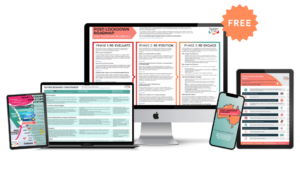As the new year approaches, it’s a good time to take a step back and evaluate the effectiveness of your marketing strategy. After all, the digital marketplace is constantly changing, and it’s important to ensure that your business is keeping up and achieving its goals through online search, e-commerce, social media, email marketing, and so forth.
With the sunsetting of Google Universal Analytics on the horizon, now is the perfect time to assess your current tools and consider implementing new ones that will help you begin measuring digital marketing success in 2023 with a return on investment.
Steps to take when measuring digital marketing success
It depends on the digital marketing activities that you’re doing, and also the stage of your digital development. Regardless, most small businesses have or should have the following marketing assets in place and all the relevant data analytics that is freely accessible and able to be measured:
Digital marketing stack
- Online reputation
- Website, local search and search engine optimisation
- Partnerships/distributors, third-party listings and referring sites
- Customer database, email marketing
- Social media

Keep it simple and less is more!
So how do you select simple measures, say around 10 that you track monthly, that isn’t laced with tech jargon and take a long time to manage?
Start off with the following:
| Marketing Asset | Measures |
|---|---|
| Online reputation |
|
| Website, local search and search engine optimisation |
|
| Partnerships/distributors, third-party listings and referring sites |
|
| Customer database, email marketing |
|
| Social media |
|
You can always add more as you become more fluent with analytics and want to start to interrogate your users’ behaviour more closely to inform future marketing campaigns and activities but these metrics above will help get you started.
How do you go about implementing digital marketing measures?
1. Start with the end in mind – your business goals
You’re not doing all of this digital marketing and social media effort for the fun of it…or maybe you are 😉 Most small business owners tell us they are time-poor and want to maximise their efforts and have a plan, so they don’t waste their time.
Well, that goes for everything you do in your business, doesn’t it? Your efforts should be aligned with your plan. Do you have a plan? What are your business goals for the next year?
Once again your goals depend on where you are in terms of the maturity of your business, but for most businesses, there is at least one big important financial goal and then you may have another one or two business goals. Some typical goals we hear from clients are:
- Xx $’s in sales revenue by xx date
- Develop xx product line and launch it into xx markets by xx date
- Increase net promoter score (NPS) by xx by xx date
Note how both business goals are SMART goals (Specific Measurable Achievable Relatable & Timely).
Now you have your purpose and focus for all of the activities in your business.
2. Set your marketing objectives
Your marketing objectives support your business goals…and if they don’t, they should!
This will help you focus your efforts on the most relevant marketing activities that work towards your end goal as well as ensure your valuable time isn’t wasted on trying to solve each and every problem that may arise in business.
Setting targets for each measure that you track will help you monitor your progress and make adjustments as needed. It is important to consider both awareness and conversion activities in your marketing efforts, as it is typically easier and more cost-effective to convert a sale from someone who is already familiar with and trusts your brand.
Therefore, it is typical to track against marketing objectives that include top-of-the-funnel (awareness) through to bottom-of-the-funnel (sales conversion) activities. For example:
Top of the funnel:
- Social media follower growth
- Website new visitors
- Events on your website eg. downloads
- New email database subscriptions
- Email open rate
Progressing through to the bottom of the funnel:
- Social media conversions eg sales, click-throughs
- Email click-throughs
- Online enquiries and sales
- Online reviews and customer feedback (word of mouth and retention)
3. Set up a simple spreadsheet and measure monthly
Measuring digital marketing success is made simple when you follow these 7 key measures as they are important indicators of business growth.
| Targets | Measures | Month 1 (Achievement, target or previous comparative number) |
| Business goal: Grow sales revenue by 20% by 30 June 2023 | Online Sales | $xxx
Vs $xxx last year |
| Marketing objective 1: Grow our customer database by 20% by 30 June 2023 | Subscriptions | Increase by x% |
| Click-throughs on email campaigns | Increase by x% | |
| Marketing objective 2: Grow our Instagram followers by 20% by 30 June 2023 | Followers | Target: 3,560 |
| Engagement rate of posts | Retain 2% | |
| Marketing objective 3: Retain 50% of our customers | Net promoter score (from customer feedback) | Target: 90% |
| Online review rating (average) | Retain or increase |
Your next steps to measuring digital marketing success in 2023
- Set up a Google Analytics account for your website – get help from your web developer or an appropriate GA4 expert (yes we have one of these on our coaching team…the lovely Mandy)
- Familiarise yourself with the Insights functions on your social media accounts…readily available in either the apps like Facebook or Instagram or use Meta Business Suite and see both sides by side for each platform. This is where you’ll see metrics about your audiences and your content.
- Review your online reviews! Where are you now…where would you like to get to so that you have a five-star online reputation…and how are you going to get there? Remember the number of reviews, the recency of reviews and responding to every review is key to online reputation growth.
- Set up a simple spreadsheet with your business goal or goals, and your marketing objectives. Then select a small number of measures and set targets for them. Then start measuring monthly!
- Come see us if you need help. Tourism Tribe’s Digital Engagement Health Check, our support and learning memberships and our coaches are the magic recipe for supporting you on your business journey.




